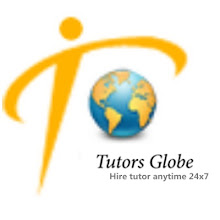For many years, I trained in a closed classroom with some windows, and yet I could perceive what was occurring all around the world gratitude to the Internet. Although I tried learning somewhat new each and every day, till I put systems in position, I spend more time in searching for resources than really learning. I recognized that to efficiently engage in professional learning, I required instruments in place to curate the content, save what I found, and connect to the other educators.
A) Curating Content:
At first, reading and learning was simple. Each morning, I browsed to Assignment Help sites or two to three blogs to perceive what might be the latest. Though, as my reading list extended, I required a better system. Initially, I subscribed to many blogs by e-mail. Though, twenty to thirty messages a day was far from convenient. Instead of visit each blog personally or wade via dozens of e-mails, I required content pushed to me on one screen so that I might focus on reading instead of searching. I required an RSS Reader -- a tool which would automatically combined new content in one place.
Flip-board:
Sorrowfully, Google Reader went obsolete. Requiring a manner to continue reading, and to import the existing links from Google Reader, I switched to the Flip-board. By using this app, I might flip via articles in a format alike to reading a magazine. The other great benefit to Flip-board is the capability to follow hash tags and individual Twitter accounts.
Feedly:
As I personally do not use Feedly very frequently, I like to discover tools which work across all the devices. Moreover to encompass iOS and Android apps, Feedly as well syncs to the web. Similar to Flip-board, it provides a smooth interface for reading, and comprises settings to put aside and share the resources.
B) Save-Search-Share method:
Having my curation tools in place, I came to some problems.
- Once I establish a link, what would I do with it? When I book-marked it on my personal computer, I would not have it at education centre -- or vice-versa.
- I could not memorize what I had bookmarked or where I had book-marked it.
- Lastly, and possibly most critically, I drove to my colleague raving mad as I swamped their inboxes with links. Finally, they either unobserved or deleted me.
Solution: The best solution is social bookmarking. Rather than adding bookmarks to a browser on computer, I began saving them to the web so that they could be accessed from any system, organized, tagged for simple searching, and shared with the others.
Pinterest:
Around few years ago, I came to know the concept of using Pinterest for saving and sharing the links. The visual layout of using digital bulletin boards is much better than the long lists.
Evernote:
Beyond being a digital note-book, Evernote is immense for saving and sharing the content, especially whenever used with the Evernote Web Clipper. This button can be installed in any browser, on any system, and saves the contents of a web-page (comprising the link and a screenshot) to a designated note-book in your Evernote account. Whenever saved, the title and contents become easily searchable and can also be add extra text or audio to imprison your thoughts. The unique URL can be shared by Note-books of links or directly to the other Evernote account. Moreover to being immense for professional learning, Evernote makes a brilliant student research tool.
C) Make momentous Connections:
Whenever I had planned my learning, I possibly will better prepare ideas and share them with a broader network of connections. I began using LinkedIn to join the professional groups such as TechinEDU and iPad for Education and Training to learn from a fresh audience, and also Facebook to follow bloggers and publications such as Edutopia. Ultimately, I extended to Twitter, where I joined with even more lecturers. There are a number of manners to build meaningful connections.
In writing this blog, I understand plenty of professional learning comes from linking to other teachers, consuming latest content, and then back out sharing them-- making a cycle:
Given the tools overabundance, there is no one means to engage in the professional learning. Make a system which permits you to content the curate, save useful resources, and share with the others in whatever manner best fits your learning method, devices and choices.

Comments
Post a Comment